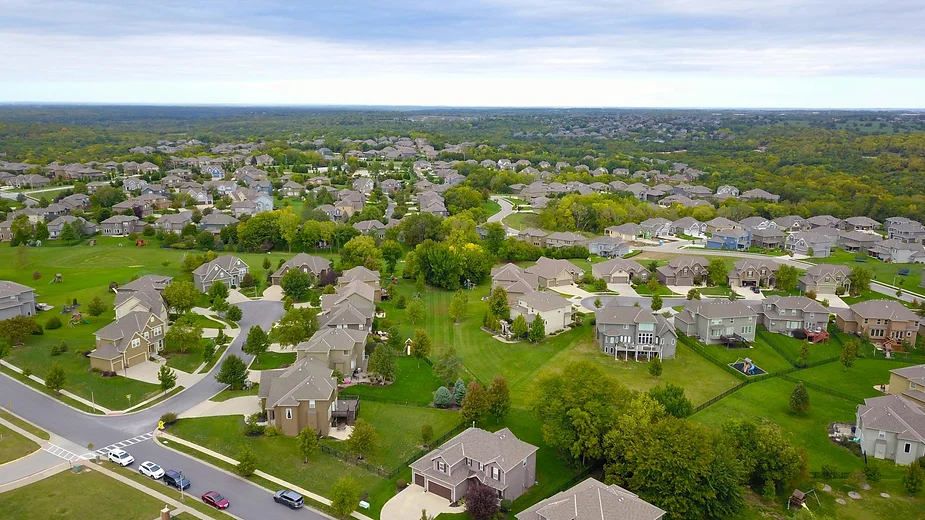
After more than a decade of political gridlock on housing policy, the United States Senate has passed the most comprehensive federal housing legislation in recent memory. The ROAD to Housing Act of 2025, officially titled the Renewing Opportunity in the American Dream to Housing Act, unanimously out of the Senate Banking Committee with a 24-0 vote in late July before being incorporated into the National Defense Authorization Act for Fiscal Year 2026. Now heading to the House for approval, this sweeping 325-page bill represents a rare moment of bipartisan consensus on one of America’s most pressing domestic challenges: the shortage of affordable housing.
A Historic Moment
The ROAD to Housing Act is the first bipartisan markup for housing in over a decade, a testament to both the severity of the housing crisis and the political will that has finally coalesced around addressing it. More than two-thirds of Americans report being “very concerned” about housing costs, creating pressure on lawmakers from both parties to take meaningful action.
Introduced by Senator Tim Scott of South Carolina and Senator Elizabeth Warren of Massachusetts, the bill is built on years of bipartisan committee work, stakeholder engagement, and multiple hearings on the state of the nation’s housing market. This collaborative approach has produced legislation that, while not without critics, represents a significant step forward in federal housing policy.
The act includes 40 provisions designed to increase housing supply, lower costs, and expand access to homeownership, spanning the full spectrum of housing needs under direct federal oversight, from homelessness prevention to first-time homebuyer assistance.
Core Strategies and Key Provisions
The ROAD to Housing Act takes a multifaceted approach to addressing the housing shortage, anchored in three primary strategies: providing incentives and technical assistance to local governments, streamlining federal processes that slow construction, and reforming existing programs to work more efficiently.
Incentivizing Local Action
One of the most significant aspects of the legislation is how it leverages federal funding to encourage local governments to adopt pro-housing policies. The Housing Supply Frameworks Act directs HUD to develop best practice frameworks for zoning and land-use policies, helping communities identify and overcome barriers to housing development. Rather than mandating specific reforms, the federal government provides technical expertise and resources to help localities chart their own path toward increased housing production.
The Build Now Act creates a pilot program to incentivize housing development of all kinds in Community Development Block Grant participating jurisdictions, using existing federal funding streams as a carrot to reward communities that welcome housing growth. The Innovation Fund, authorized at $200 million annually for five years, is a competitive grant program that rewards eligible entities that have demonstrated objective improvement in housing supply growth. Importantly, communities cannot win grants simply by writing good plans, they must show actual increases in housing permits or completions, shifting the federal role from passive funder to active partner in rewarding measurable results.
The list of qualifying pro-housing initiatives includes expanding by-right approvals for duplexes, triplexes, and other “missing middle” housing types, representing the kind of supply-side reforms that housing advocates have long championed.
Streamlining Construction
The legislation tackles bureaucratic obstacles that slow housing development. The Better Use of Intergovernmental and Local Development (BUILD) Housing Act cuts red tape around environmental reviews, empowering states, local governments, and Indian tribes to streamline reviews and increase housing development. Similarly, the Unlocking Housing Supply Through Streamlined and Modernized Reviews Act right-sizes National Environmental Protection Act review requirements for small and infill housing projects, recognizing that not every development requires the same level of scrutiny.
The Accelerating Home Building Act establishes a HUD-administered grant program to help communities establish pre-approved housing designs, or pattern books, to help streamline and expedite local construction. This approach reduces the time and expense associated with designing and permitting new homes from scratch.
Connecting Housing and Transit
The Build More Housing Near Transit Act amends the Capital Investment Grants program in the Federal Transit Administration to provide an optional increased rating for projects in areas that establish pro-housing policy near public transportation routes. This provision recognizes that housing and transportation are interdependent systems, not separate policy domains, and aligns federal incentives accordingly.
Making Homeownership More Affordable
The legislation includes several provisions aimed at expanding access to mortgage credit and making homeownership attainable for more Americans. One provision would create incentives for small dollar loan originators by allowing the Consumer Financial Protection Bureau to amend rules that currently discourage small mortgages, addressing the challenge that many lenders face limited profitability on modest loans despite strong demand from low- and moderate-income borrowers.
The Appraisal Industry Improvement Act helps bolster the appraiser workforce capacity, including by allowing both licensed and credentialed appraisers to conduct appraisals for FHA-insured mortgage lending transactions. Addressing appraiser shortages has been a persistent challenge in many markets, particularly rural areas, slowing transactions and limiting access to credit.
Preserving Existing Housing
Beyond building new homes, the act addresses the need to preserve and rehabilitate existing housing stock. The Whole-Home Repairs Act establishes a five-year pilot program at HUD to offer grants and forgivable loans to low- and moderate-income homeowners and qualifying small landlords to holistically address home repair needs and health hazards. This will stabilize aging housing stock and preserve affordable units without creating new long-term federal entitlements.
The Revitalizing Empty Structures into Desirable Environments (RESIDE) Act creates a competitive pilot discretionary program to convert vacant or underutilized buildings into residential housing, addressing the problem of deteriorating structures in many communities while adding to the housing supply.
Support and Criticism
The legislation has garnered widespread support from housing industry groups. The National Association of Home Builders applauded the bill’s favorable provisions aimed at zoning and land-use policies, rural housing, and multifamily housing. The Mortgage Bankers Association praised provisions aimed at boosting housing supply, cutting red tape, and expanding access to affordable mortgage credit. Local government leaders, including mayors from Cleveland, Atlanta, Phoenix, and Kansas City, have endorsed the act as an important step toward addressing the housing crisis at the federal level.
However, the bill is not without detractors. Conservative critics argue that the ROAD Act runs counter to Republican priorities of local control, market-based solutions, fiscal discipline, and homeownership. Some argue it expands programs that should be eliminated, pushes the federal government deeper into local zoning decisions, and promotes progressive planning staples while failing to address how to build more entry-level, owner-occupied homes. These critics contend that the bill risks creating a new generation of permanent renters rather than expanding homeownership opportunities.

What Comes Next
Having passed the Senate as part of the National Defense Authorization Act, the ROAD to Housing Act now advances to the House of Representatives. Its strong bipartisan support in the Senate, including the rare unanimous vote in the Banking Committee, suggests good prospects for eventual passage, though the House will conduct its own review and potentially make modifications.
If signed into law, the act would represent the most significant federal intervention in housing policy in over a decade, fundamentally reshaping the relationship between federal housing programs and local decision-making. Whether it succeeds in meaningfully increasing housing supply and improving affordability will depend on implementation details, adequate funding, and the willingness of local governments to embrace reform in exchange for federal support.
For the millions of Americans struggling with high housing costs, the ROAD to Housing Act offers hope that the federal government is finally taking comprehensive action to address a crisis that touches nearly every community in the nation. The road ahead may be long, but at least the journey has finally begun.





